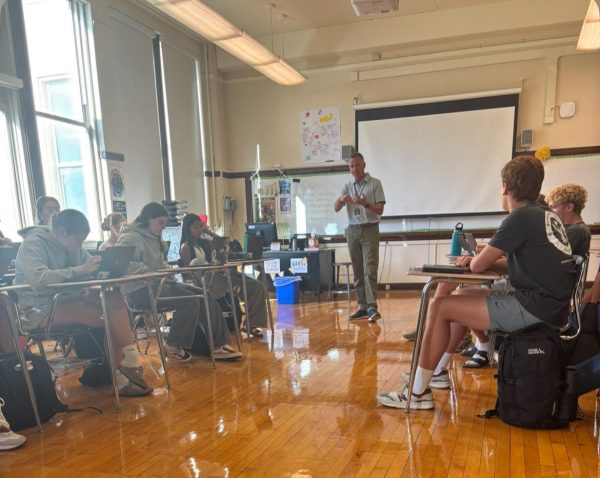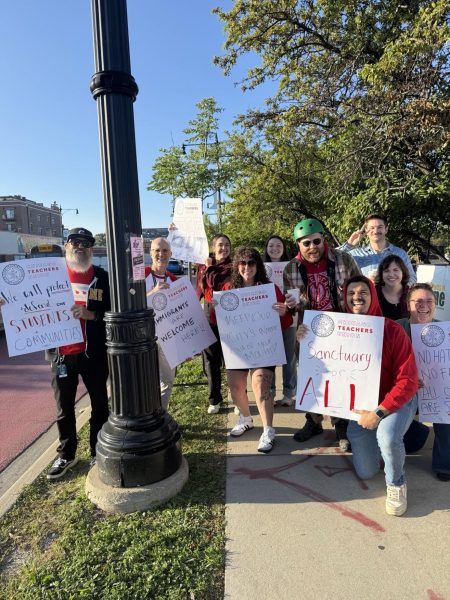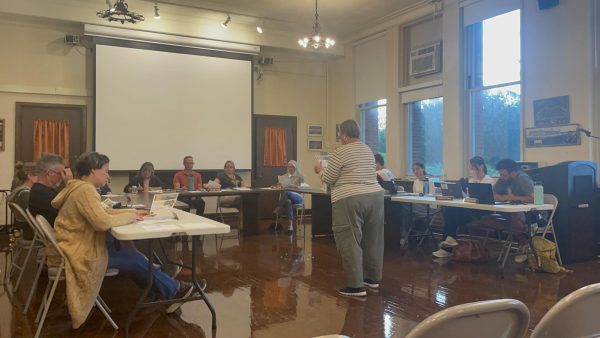Partial government shutdown sends ripple effects throughout communities
Furloughed worker percentages for the Department of Commerce, NASA, Department of Housing and Urban Development, Department of the Interior and Department of Transportation. Source: https://www.appropriations.senate.gov/news/minority/projected-impacts-of-a-trump-shutdown
Joy instantly permeated the air as Kim Danna-Mulick, a program manager overseeing grants for the U.S. Department of Housing and Urban Development, set foot into her office on Jan. 31. Upon entering, she learned that she was going to be paid for the first time in five weeks as she had been furloughed during President Trump’s partial government shutdown.
Lasting 35 days, this shutdown was the longest in U.S. history, surpassing the previous record of 21 days in 1995.
According to a fact sheet published by the Democratic staff of the Senate Appropriations Committee, the shutdown left 420,000 federal employees working without any pay, and furloughed another 380,000.
The shutdown was over a failure to pass a federal spending budget that allotted $5 billion for the construction of a wall on the Mexican-American border
Nicole Cantello, a representative of the Environmental Protection Agency (EPA) employees union AFGE Local 704 and a Lane mom, was furloughed and found herself working 9-10 hours a day trying to attain media attention on behalf of her union members during the shutdown. Extended closures, such as this one, affect government workers substantially.
“They are very traumatic to go through, and we desperately try to stop them from happening, if we can,” said Cantello.
Besides being the lengthiest, this shutdown was unique in many other aspects.
“Typically, when we have a shutdown situation, we see that both the Congress and the President are motivated to end it as quick as possible because it’s not popular amongst the people,” said Ms. Caracci, an AP U.S. History and AP U.S. Government and Politics teacher. “Neither the Congress nor the President seemed particularly motivated to end it.”
Many Americans saw no end in sight for the shutdown and could not predict its end. Caracci briefly thought about introducing a game where people formulate estimates of when the government would reopen, post them on a wall, and cross them off as each day passed.
However, on Jan. 25 a temporary deal was reached that funded the government through Feb. 15. Many were displeased with the deals tentativeness as it does not offer a long term solution.
“I am never comfortable until a full appropriation is passed by Congress and signed by the President,” said Danna-Mulick, whose son graduated from Lane in 2018.
While the deal does not conclude the debate surrounding the border wall, Cantello still supports the plan that was reached to fund the government for the three weeks.
“I had people who had trouble putting food on the plate,” Cantello said. “To the extent of alleviating all of those problems, [I] can’t have any argument with that.”
According to Cantello, upon returning to work, many federal employees were completely overwhelmed as missed tasks quickly piled up.
“I don’t think anybody has adjusted at all,” Cantello said. “There is a whole bunch of work to do, and no one understands how to prioritize it, and no one’s got really good information on how to do that.”
Danna-Mulick shared a similar experience.
“It was frantic,” she said. “Employees couldn’t access the network and if you can’t access the network you can’t get to the federal treasury to deal with your money for your grantees.”
Many government workers are preparing for another shutdown after the temporary deal expires on Feb. 15. In order to soften the blow another shutdown would entail, Danna-Mulick and her colleagues have already began preparing safety measures by compiling a list of grantee priorities in case of another shutdown.
Although the shutdown is currently over, it has produced residual repercussions.
In 2013, the government shut down for 16 days over the failure to pass a budget that sufficiently funded Obamacare.
According to an article published by U.S. News, federal employees who worked without pay are still currently in the process of being reimbursed by the government, not only for their time, but also for accumulated interest due to missed payments from the 2013 shutdown.
In the end, the uncertainty of whether the government will shut down again is what haunts many, including Cantello.
“We think we know what is going to happen. We think we’ve lobbied for a certain thing. We think we have everything worked out, and then things don’t turn out the way that you think they will,” Cantello said. “We are preparing for the worst.”
Your donations directly fund the Lane Tech student journalism program—covering essential costs like website hosting and technology not supported by our school or district. Your generosity empowers our student reporters to investigate, write, and publish impactful stories that matter to our school community.
This website is more than a publishing platform—it's an archive, a research tool, and a source of truth. Every dollar helps us preserve and grow this resource so future students can learn from and build on the work being done today.
Thank you for supporting the next generation of journalists at Lane Tech College Prep!

Eitan Silver is a Senior here at Lane Tech. A member of the Omega concentration, he is very much interested in the history and English classes. He is also...





